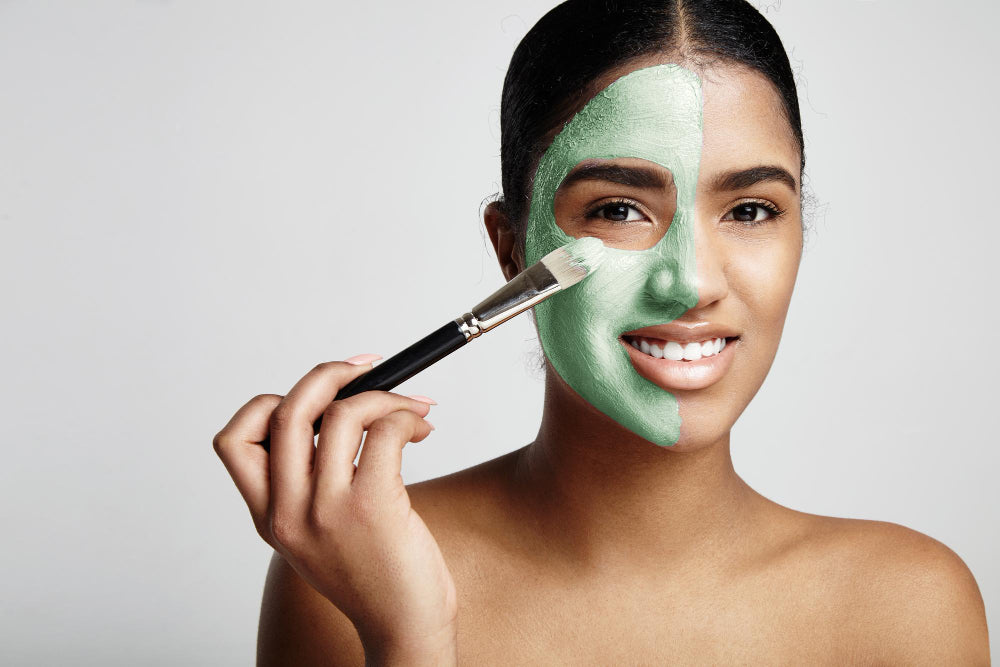Clay masks have gained immense popularity in the skincare world in recent years thanks to their ability to cleanse and purify the skin deeply. But how often should you use a clay mask? Is it safe to use it every day?
Read on to learn when to use a clay mask in your routine. Well, you should use a clay mask 1-2 times a week to help absorb excess oil, unclog pores, and promote clearer skin without over-drying.
In this comprehensive guide, we will explore the ideal frequency of using a clay mask, when to incorporate it into your skincare routine, and how to maximize its benefits. So, let's dive in!
Why Use a Clay Mask?
Clay masks are a powerful tool in your skincare arsenal, designed to draw impurities, excess oil, and toxins from the skin, leaving you with a refreshed and radiant complexion. They work by absorbing dirt and oil from deep within the pores, unclogging them, and reducing the chances of breakouts.
Finding Your Perfect Balance

The frequency of clay mask usage depends on various factors, including skin type, concerns, and the specific formulation of the mask. Here's a tailored guide to help you find your perfect balance:
Normal to Oily Skin
If you're blessed with normal to oily skin, incorporating a clay mask into your routine 1-2 times a week can work wonders in controlling excess oil production, minimizing pores, and preventing breakouts. Look for masks enriched with ingredients like charcoal or salicylic acid for enhanced purifying benefits.
Dry or Sensitive Skin
For those with dry or sensitive skin, it's essential to approach clay masks with caution to avoid over-drying or irritation. Limit usage to once a week and opt for gentle formulations infused with hydrating ingredients like hyaluronic acid, aloe vera, or colloidal oatmeal. It ensures a nourishing experience that replenishes moisture while detoxifying the skin.
Combination Skin
If your skin exhibits a combination of oily and dry areas, striking the right balance is key. Incorporate a clay mask into your routine 1-2 times a week, focusing on the oily T-zone while being mindful of the drier areas. Choose multi-tasking masks that address both concerns, leaving your skin harmoniously balanced and radiant.
How to Use a Clay Mask?
Clay masks are typically used after cleansing and before serums and moisturizers. Here's how to incorporate them seamlessly:
1. Cleanse your face to remove dirt and makeup.
2. Apply a thin, even layer of the clay mask, avoiding the eye and lip areas.
3. Relax and unwind for the recommended time (usually 10-15 minutes).
4. Rinse thoroughly with lukewarm water.
5. Apply a hydrating moisturizer to replenish lost moisture.
When to Clay Down in Your Routine?

When it comes to the specific time to use a clay mask, there isn't a one-size-fits-all answer. However, there are some general guidelines to keep in mind:
1. Evening Routine
Many skincare experts recommend using a clay mask in the evening as part of your skincare routine. This allows the mask to deeply cleanse your skin and remove impurities accumulated throughout the day.
2. Before Special Occasions
If you have a special event or occasion coming up, using a clay mask a day or two before can help give your skin a radiant and refreshed appearance.
3. Avoid Before Sun Exposure
It's best to avoid using a clay mask right before sun exposure, as the mask can temporarily increase your skin's sensitivity to the sun.
Remember, listening to your skin and adjusting the timing based on its needs is essential. If you notice any irritation or unevenness in your skin tone, consider reducing the frequency or duration of clay mask usage.
You can benefit from skin improvement treatments like facial cupping if you want lymphatic drainage and detoxification of facial skin.
Always follow the instructions provided by the specific clay mask product you are using, as different masks may have other recommendations for application and timing.
Can I Use Clay Every Day? Not Quite

Use the clay mask magic responsibly!
While tempting, daily clay mask use can disrupt your skin's natural barrier, leading to dryness and irritation. Listen to your skin. If it feels tight or uncomfortable, take a break.
By following these guidelines, you can harness the power of clay masks for a clearer, more balanced complexion. Remember, consistency is key! Make clay masks a regular part of your routine, but respect your skin's needs for optimal results.
User Tip: You can use hyaluronic acid if your skin is prone to acne and improve its appearance with appropriate usage.
Indications It's Time to Discontinue Mask Usage!
Should you experience significant irritation, sudden acne outbreaks, or any form of allergic response due to your face mask, it's crucial to halt its usage promptly.
If feasible, seek advice from a dermatologist or another healthcare professional to determine the most suitable course of action. They could recommend topical or oral medications to alleviate the irritation.
In certain instances, inflammation and other forms of irritation may resolve on their own without necessitating medical intervention.
The Bottom Line
Clay masks are a fantastic addition to any skincare routine, offering deep cleansing and purifying properties. The frequency of use depends on your skin type and its specific needs.
Remember, nourishing your skin from within and moderation is key when it comes to using clay masks to maintain a healthy and balanced complexion. So, embrace the power of clay masks, but remember to listen to your skin and give it the care it deserves!
Remember to always consult with a dermatologist or skin care professional if you have any concerns or specific skin conditions.
Go forth and get glowing!

Are you curious about how to incorporate clay masks into your skincare routine? Ask our skin experts if you have any queries about using clay masks for your particular skin type. Enhance your skincare regimen and achieve a radiant complexion like never before!
Explore More:




